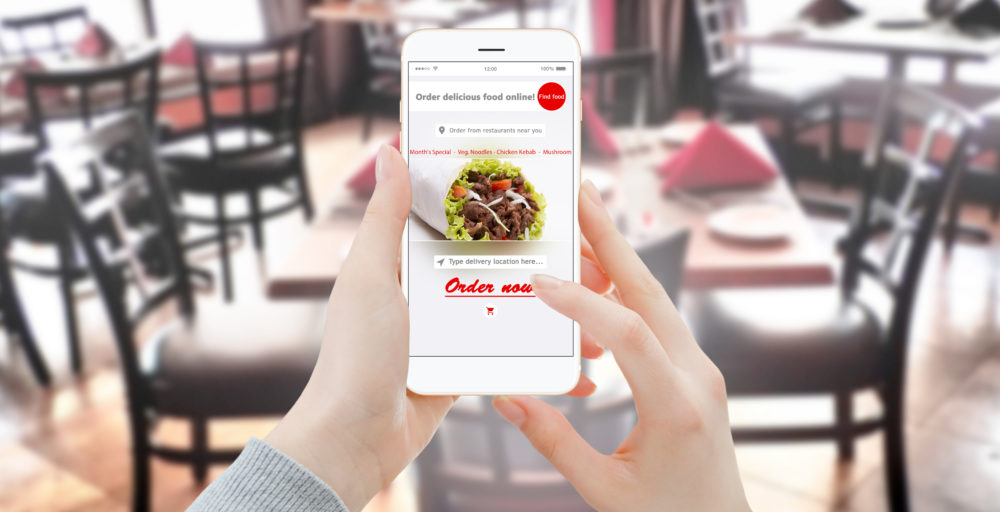The food sector is changing fast, not least because of the rise of technology.
Here is what is happening to the industry and how the right tech tools can maximise your business offering.
A challenging market
Is eating out on the way out? You would be forgiven for thinking so, with the UK’s top 100 restaurants seeing their profits fall by 64 per cent in a year, and chains like Prezzo and Jamie’s Italian announcing closure after closure.
It’s certainly a tough world out there for any restaurateur with butter having skyrocketed in price by 40 per cent and beef and lamb prices also on the rise. UK chains which benefited heavily from confident private investors have since been impacted by increased rents and rates, the National and London Living Wage, a weak pound and Brexit uncertainties. Aside from the higher-profile closures, it’s independent restaurants which stand to be impacted the most as overheads can be higher and costs more difficult to absorb.
This doesn’t just impact retailers but of course suppliers and wholesalers too, which were heavily dependent on the now empty restaurants they once supplied with fresh, often local fare. A whopping 90 per cent of the UK’s fresh produce suppliers’ volume was taken up by chains which are now closing and, in a worst-case scenario could fail to pay wholesalers with the risk of suppliers not seeing the money their ingredients are worth.
Not defeated yet
Despite closures and uncertainty, it’s not all over yet. By 2021, the UK food industry is set to increase by 21 per cent. In 2017, consumer spending in restaurants and cafés totalled £85 billion, according to Statista. In 2016, the total UK restaurant industry was made up of 83,600 restaurants employing 871,000 staff and taking £34.9 billion in revenue.
Young people in cities seem to be quitting their jobs to run quirky food vans in droves, and the advance of delivery services means foodies can get their fix at home instead of having to make time to visit a restaurant. Rather than having a weekly go-to restaurant, consumers look for variety in dishes, ingredients and restaurants. Healthy eating is also on the up which is an important factor for fresh and organic produce suppliers as well as the restaurants who buy from them.

That said, 43 per cent of UK consumers still eat out at least once a week, but spend on average a rather modest £19 each, pointing to a requirement for more reasonable prices which can often be more difficult to achieve for independent stores than the likes of McDonald’s or Nando’s. Therefore, efficient supply chain management and utilising technology to gain best value and pass savings onto the customer is vital.
Tech to the rescue
How then can independents and small businesses fight to keep their ground in an ever-changing environment, and can they even take advantage of recent developments which have seen quick-service chains fall behind? As we have come to expect nowadays, technology could be the answer.
Online delivery services like Deliveroo and JustEat are a sure-fire way for any restaurant to extend its reach, and it’s worth considering even for independents so customers browsing at home can enjoy more options than their usual Friday night delivery.
Businesses which use online ordering facilities are said to bring in up to 30 per cent more business – however it’s worth considering the fees this can incur when deciding if it’s worthwhile for your business.
Facebook ordering can be utilised by small restaurants in order to market and sell meals without the fees involved in the above delivery services. Facebook allows restaurants to offer ordering facilities for customers in an affordable, customisable way. However, it’s worth noting that any kind of social media platforms must be constantly monitored and kept fresh with content.
Free Wi-Fi may be a given for many consumers nowadays, but can still really add value for a small restaurant or café. In a connected world, customers expect to be able to check up on emails and social media even at lunch or dinner, and for a business owner it can be fairly cheap to find a Wi-Fi deal. This is especially true when the cost is weighed up against the many new customers that a simple ‘free Wi-Fi’ sign on a chalkboard can bring in.

Supply chain management is essential in keeping costs down and absorbing price fluctuation, and can be kept efficient by using the right technology. With fluctuating prices as well as the risks, independent restaurants face in comparison with big name companies who enjoy tried and tested suppliers, an indie restaurant can end up paying different prices for the same ingredients and can experience a lack of transparency.
Supply chain management software and e-procurement tools are invaluable for a restaurant managing a small but vital supply chain. New technology such as apps also benefit suppliers who can connect with independent and small restaurants and cafés, which is especially important at a time when many suppliers have lost their main buyers due to closure. Such apps can also be useful in ensuring efficient payment, which is often a prickly subject within the supply chain and is vital for suppliers to keep going.
Combining buying power can save businesses up to 20 per cent on ingredient prices, so that independent businesses can enjoy similar prices to their larger counterparts.
Looking ahead
The restaurant industry will always be a competitive one and running any independent food business requires a lot of work in order to reap the financial rewards one deserves.
While some costs such as tax, rent and wages are unavoidable, cost savings can be made in other areas from selling unneeded equipment and downsizing premises (note the food truck craze) but most importantly, technology must be utilised to minimise outgoings and maximise profits.
Indeed, technology innovations can benefit independents even more than big competitors, and this changing market could even be an opportunity for smaller businesses, from suppliers and wholesalers to retailers, to take advantage of a growing space and varying consumer needs by digitising. This ensures the right ingredients make their way from farm to fork on time, at cost, and with sustainable benefits.
Anx Patel is the founder and CEO of independent stock ordering app, GoKart.





